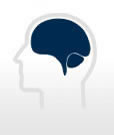Prof. Dr. Boris Suchan, Institute of Cognitive Neuroscience, Department of Neuropsychology, Faculty of Psychology

Research Programme:
My research interests focus mainly on the functional organisation of the prefrontal cortex. The prefrontal cortex is associated with highest cognitive functions like working memory and executive functions. To investigate these functions and their anatomical organisation, we use functional magnetic resonance imaging (fMRI) and electroencephalogram (EEG) in combination with source localisation.
Whereas fMRI provides a good spatial resolution, EEG provides a temporal resolution in the range of milliseconds with the additional possibility to localise the generator of the EEG signal using source localisation. One focus of my research is on working memory and its neural correlates. In these studies we look for the neural correlates of the interaction of the subsystems in working memory. Additionally we focus on the neuroanatomical location of the central executive which is involved in manipulation in working memory.
While these studies mostly use fMRI, we use EEG to investigate response evaluation which is another field of interest. The anterior cingulate cortex (ACC) is associated with attention, error detection and response evaluation. Using EEG, a negative peak over central localisation can be observed after the subjects made their responses. As this component was mainly associated with error detection in the literature, results of recent studies yield evidence for a non error related, more evaluative function. We are specifically interested in the functional significance of this component as well as its neuranatomical generator. By analyzing EEG data in a traditional way and additionally with source localisation we aim at characterising the functional significance and the neruoanatomical networks that are associated with this component.
Beside these topics I am using techniques like Voxel Based Morphometry to investigate brain changes in specific diseases e.g. ataxia. At the moment I am starting to use Diffusion Tensor Imaging and Dynamic Causal Modelling techniques to investigate brain functions from a different side.


